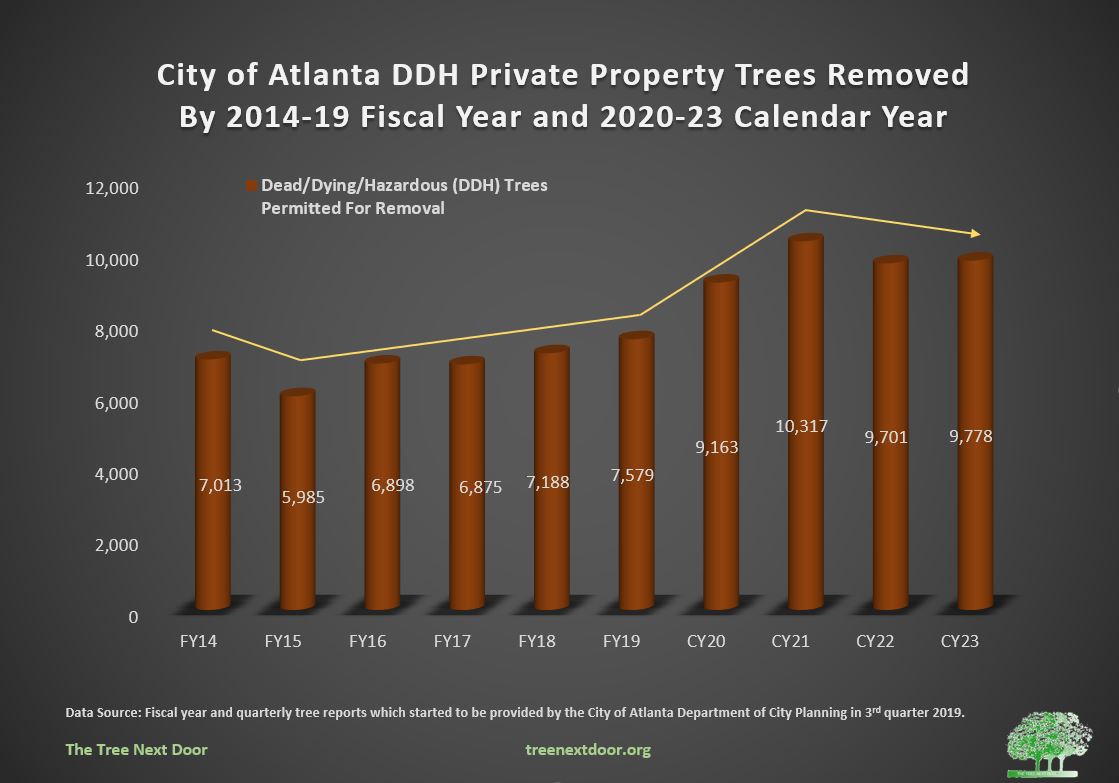Search for Results of a DDH Inspection
Whenever someone files an application to remove a tree(s) as dead, dying, or hazardous (DDH), the City Arborist conducts an inspection and issues an inspection report which describes the condition of each tree and whether or not the tree was approved to be removed as DDH. To access the inspection report for a particular property, follow these instructions below:
- Login to Accela Citizen Access. https://aca-prod.accela.com/ATLANTA_GA/Default.aspx
- If you don't have login credentials, then you must register with Accela first before you are able to view or print the inspection results for a DDH application.
- Hover your cursor over I Want To and select Search Submitted Applications and Permits.
- On the next page, scroll down and enter either the permit number in the Record Number field, or enter the address in the Street No and Street Name field. Do not enter both. Also, enter the street number in the first Street No field only and do not enter in a Street Type unless your street name applies to numerous street types (i.e. "Peachtree").
- Scroll down and click on the blue Search button.
- If you searched by street address and find multiple permit applications associated with this address, click on the DDH record you want to view. On the next page, you will be in the DDH permit record.
- Once you are in the DDH record, scroll down to locate and click on the blue Print/View Record button.
- The results of the Dead, Dying, or Hazardous inspection will pop up in a separate window. Use the tools at the top of the window to enlarge, download, or print the report.
DDH Tree Removals
According to the City's published tree data, the removal of dead, dying, or hazardous trees (DDH) has not increased as much as the removal of healthy trees or trees removed without a permit, although the number removed as DDH jumped significantly during Covid and never returned to pre-Covid removal rates.
Removal of trees in CY2023 as DDH is 7% higher than four years ago, and 40% higher than it was on average during the six fiscal years before Covid. The overall increase these past four years is troubling given that no recompense is assessed on DDH trees and there is no known outbreak of tree disease that's now affecting 40% more trees.
(Click on the image below to enlarge.)

Chart note: Before 2020, tree loss data was provided only by fiscal year (FY), from July 1 to June 30.
One reason so many more trees started being removed as DDH in 2020 was that the DDH application approval rate approached nearly 100% when the city arborists first stopped conducting onsite inspections during the pandemic. Before Covid, the annual DDH approval rates averaged 81%. However, inexplicably, approval rates did not return to pre-pandemic levels once on-site inspections resumed, and they are now back to the all-time high approval rate of 94% seen in 2020. This pattern of approving almost all trees submitted as DDH is concerning given there is no right to appeal a DDH decision. Developers have admitted to us that they submit as many trees as they can to the Arborist Division as DDH to "see what will happen".
DDH Application Approval Rates
- FY2014: 82%
- FY2015: 78%
- FY2016: 85%
- FY2017: 81%
- FY2018: 79%
- FY2019: 81%
- CY2020: 94%
- 1st Quarter: 86% (Covid shutdown occurred two weeks before the end of 1st Quarter)
- 2nd Quarter: 98%
- 3rd Quarter: 99%
- 4th Quarter: 95%
- 2021: 89%
- 2022: 91%
- 2023: 94%
In 2020-21, more trees were removed as DDH than healthy trees. However, the sharp increase in healthy tree removals since 2021 now means that 1.7 healthy trees are removed for every DDH tree removed.
(Click on the image below to enlarge.)
Except for the first six months of COVID-19, the quarterly data shows a seasonal pattern in the removal of DDH trees. The fewest DDH permits are issued between October and December, then steadily increase throughout the next year before dropping off again in the fall.
(Click on the image below to enlarge.)
One might expect DDH tree removals to correlate with the number of plan reviews each quarter, but the quarterly reports show no seasonal pattern linking DDH permits to plan reviews, as illustrated in the chart below::
(Click on the image below to enlarge.)


